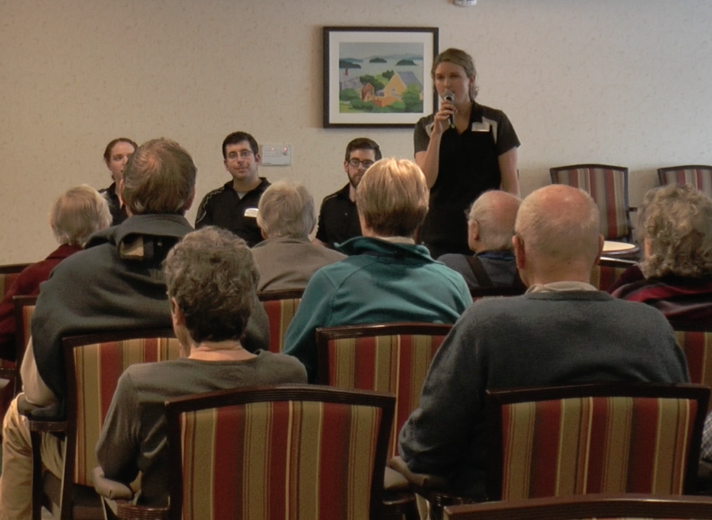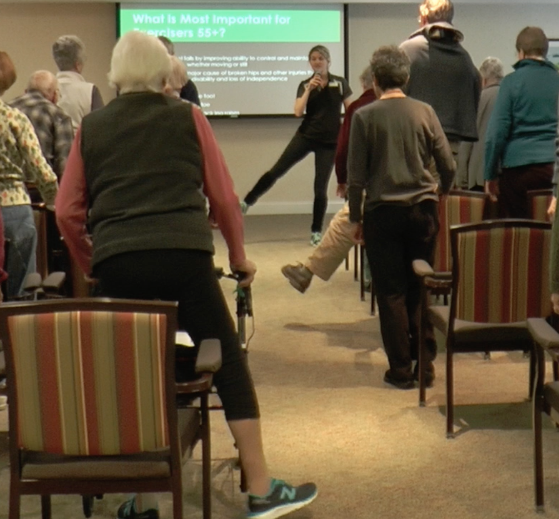
Have you ever thought about what happens inside your body when you exercise? At a recent presentation for people 55 and older, the fitness team at OceanView, a retirement community in Falmouth, explained what happens before, during and after exercise.
What happens before you exercise?
Under normal circumstances, your body is in what’s called homeostasis.
- Blood pressure is at its usual resting level (Read this to find out what is considered normal.)
- Heart rate is your normal resting level
- Breathing is between 12 to 16 respirations a minute
- All systems are functioning as they should when you’re at rest
What happens during exercise?
When you exercise, every system in your body must adapt, said personal trainer Jameson Skillings. “No systems remain constant during exercise,” he said. “Nothing stays the same.”
- Blood pressure increases
- Heart rate increases
- Breathing is between 16 to 20 respirations a minute
- Digestive system slows down
- Blood flow is increased to muscles
- Blood vessels dilate and you sweat to maintain body temperature
- Nervous system activates muscles to keep working
What happens after exercise?
After exercise, everything usually goes back to normal although not necessarily immediately.
- Blood pressure dips below normal resting levels
- Heart rate slows to normal resting level
- Breathing is between 12 to 16 respirations a minute
- Body temperature may stay up for a short time but goes back to normal
- Everything else returns to normal
We rev things up when we exercise which can do wonders for us at any age. OceanView fitness specialist Shelby Poduch passed along several benefits of regular exercise that are especially important for people 55 and older.
- Increases flexibility
- Helps build and maintain muscle mass and fights muscle loss
- Improves balance
- Improves posture
- Increases aerobic capacity
- Improves agility
Taken altogether, the benefits may add up to less risk of falling, more stamina and more independence.
How much exercise do you need?
It turns out it doesn’t take much to make a big difference. “The American College of Sports Medicine recommends 150 minutes of exercise a week,” said fitness coordinator Kate Foley. “That does sound like a huge number, but it counts just as much if you break it down into little pieces and do maybe 10 minutes of exercise at a time. It all adds up and every little bit counts.”
So, let’s get started! Up out of your chair. We’re going to try standing on one foot. Grab onto something for stability if you need to. First one foot, then the other If you feel wobbly or not so confident, it’s a good sign you need to work on your balance.
Next, try walking with one foot in front of the other — like you’re walking on a tightrope.
And finally, let’s do some simple leg lifts. To the front, to the sides and to the back. Now doesn’t that feel great!
If you’re not already doing some kind of physical activity, I’d say it’s time to get started. And if you are high five!
What do you do for regular exercise? How has it improved your life?



Leave A Comment